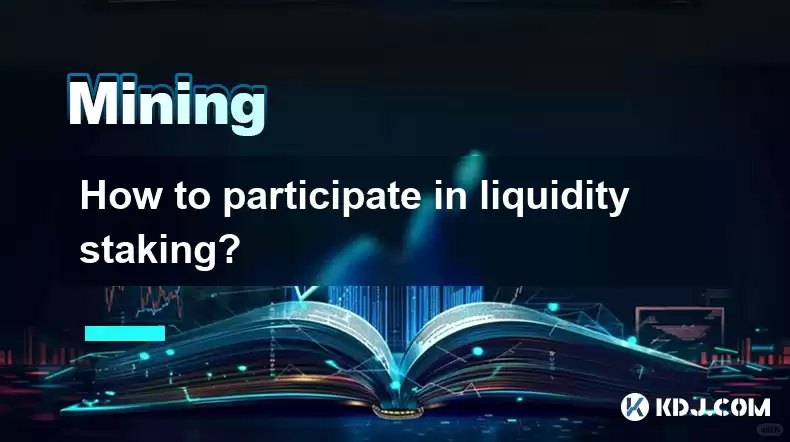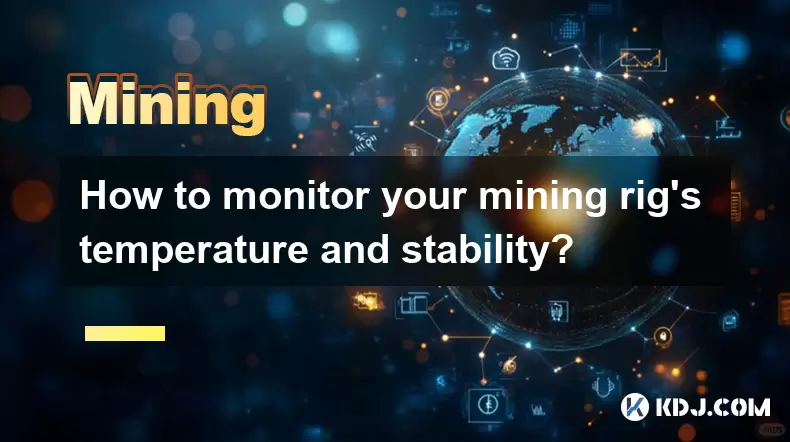-
 Bitcoin
Bitcoin $116400
-0.36% -
 Ethereum
Ethereum $4033
3.40% -
 XRP
XRP $3.302
-1.26% -
 Tether USDt
Tether USDt $1.000
-0.02% -
 BNB
BNB $796.1
1.67% -
 Solana
Solana $177.8
1.89% -
 USDC
USDC $0.9999
0.00% -
 Dogecoin
Dogecoin $0.2314
4.09% -
 TRON
TRON $0.3381
0.14% -
 Cardano
Cardano $0.7989
1.22% -
 Stellar
Stellar $0.4496
-1.84% -
 Chainlink
Chainlink $20.42
9.42% -
 Hyperliquid
Hyperliquid $41.17
0.88% -
 Sui
Sui $3.914
3.77% -
 Bitcoin Cash
Bitcoin Cash $584.7
1.52% -
 Hedera
Hedera $0.2632
-0.54% -
 Avalanche
Avalanche $24.09
3.40% -
 Ethena USDe
Ethena USDe $1.001
-0.02% -
 Litecoin
Litecoin $123.2
1.33% -
 Toncoin
Toncoin $3.318
-0.04% -
 UNUS SED LEO
UNUS SED LEO $8.984
-0.05% -
 Shiba Inu
Shiba Inu $0.00001323
2.85% -
 Uniswap
Uniswap $10.90
4.41% -
 Polkadot
Polkadot $3.999
3.34% -
 Dai
Dai $1.000
0.01% -
 Cronos
Cronos $0.1630
9.64% -
 Bitget Token
Bitget Token $4.484
0.82% -
 Monero
Monero $272.4
2.44% -
 Pepe
Pepe $0.00001173
6.03% -
 Aave
Aave $290.8
2.88%
How to participate in liquidity staking?
By understanding liquidity staking's flexibility and choosing a trusted platform, cryptocurrency holders can earn rewards while maintaining access and liquidity of their assets.
Feb 25, 2025 at 06:30 am

Key Points
- Understand the concept of liquidity staking
- Choose a suitable cryptocurrency exchange or platform
- Deposit eligible crypto assets into the staking pool
- Monitor and manage staking rewards
- Withdraw staked assets and rewards when desired
Article Outline
1. Understanding Liquidity Staking
Liquidity staking allows cryptocurrency holders to earn rewards for staking their assets while maintaining access to their funds. Unlike traditional staking, where assets are locked for a specific period, liquidity staking provides flexibility and the ability to trade or withdraw staked funds at any time.
2. Choosing a Cryptocurrency Exchange or Platform
Various cryptocurrency exchanges and platforms offer liquidity staking services. Consider the following factors when selecting a provider:
- Supported cryptocurrencies
- Staking rewards and fees
- Liquidity options
- User interface and security measures
Examples:
- Binance
- Coinbase
- Lido Finance
- Rocket Pool
3. Depositing Crypto Assets
Once you have chosen a provider, deposit the eligible crypto assets into the staking pool. Each platform may have its own process and minimum deposit requirements.
- Transfer the assets to the platform's staking address.
- Convert the assets to the designated staking token (e.g., stETH for Ethereum staking).
- Confirm the transaction and deposit amount.
4. Monitoring and Managing Staking Rewards
Staking rewards are typically earned daily or weekly. Monitor the platform's dashboard or wallet to track accrued rewards.
- View your staking balance and rewards earned.
- Claim or reinvest rewards to compound earnings.
- Adjust staking parameters (e.g., lockup periods) to optimize returns.
5. Withdrawing Staked Assets and Rewards
When you need to access your staked assets or withdraw rewards, follow these steps:
- Initiate a withdrawal request from the platform's interface.
- Specify the amount of assets or rewards you wish to withdraw.
- Confirm the transaction and wait for the completion time.
- Assets will be transferred back to your wallet or trading account.
Frequently Asked Questions
Q: Is liquidity staking safe?
A: The safety of liquidity staking depends on the chosen platform and the underlying staking protocol. Reputable platforms implement robust security measures to protect user funds. However, it is always advisable to conduct thorough research and consider the risks involved.
Q: Which cryptocurrencies are eligible for liquidity staking?
A: The range of supported cryptocurrencies for liquidity staking varies between platforms. Common options include Ethereum (ETH), Polygon (MATIC), and Solana (SOL). Check with the specific platform for an updated list.
Q: How often are staking rewards distributed?
A: The frequency of staking rewards depends on the platform and the underlying blockchain protocol. Some platforms distribute rewards daily, while others may have weekly or monthly payouts. Check with the platform for specific distribution schedules.
Q: Are there any fees associated with liquidity staking?
A: Some platforms charge fees for liquidity staking services. These fees may cover network transaction costs, platform maintenance, and rewards distribution. Check with the platform for a breakdown of any applicable fees.
Q: Can I participate in liquidity staking with a small amount of crypto?
A: Most platforms have minimum deposit requirements for liquidity staking. However, some platforms offer flexible options that allow users to participate with smaller amounts of crypto assets. Check with the platform for specific minimum requirements.
Disclaimer:info@kdj.com
The information provided is not trading advice. kdj.com does not assume any responsibility for any investments made based on the information provided in this article. Cryptocurrencies are highly volatile and it is highly recommended that you invest with caution after thorough research!
If you believe that the content used on this website infringes your copyright, please contact us immediately (info@kdj.com) and we will delete it promptly.
- Decentralized Data: Taking the Driver's Seat in the Data Economy
- 2025-08-09 14:30:11
- Bitcoin vs. Gold: The Store-of-Value Showdown in the Digital Age
- 2025-08-09 14:30:11
- BlockDAG, Stellar, and Crypto Adoption: Navigating the Hype
- 2025-08-09 14:50:12
- Litecoin Price Surge: Riding the Wave of Institutional Interest and ETF Hopes
- 2025-08-09 14:50:12
- Chainlink's Wild Ride: Whales Are Still Loading Up on LINK!
- 2025-08-09 15:10:11
- Ruvi AI: Solana's New Challenger Dominating Token Sales with AI Innovation
- 2025-08-09 14:55:15
Related knowledge

What is "proof-of-work" and how does it relate to mining?
Aug 07,2025 at 02:03pm
Understanding the Concept of Proof-of-WorkProof-of-work (PoW) is a consensus mechanism used in blockchain networks to validate transactions and secure...

What are the differences between mining on Windows vs. Linux?
Aug 06,2025 at 11:29pm
Overview of Cryptocurrency Mining PlatformsCryptocurrency mining involves using computational power to solve complex cryptographic puzzles and validat...

How to use an old computer for cryptocurrency mining?
Aug 07,2025 at 12:42pm
Understanding the Feasibility of Using an Old Computer for MiningUsing an old computer for cryptocurrency mining may seem outdated, but it is still te...

Can you mine cryptocurrency using solar power?
Aug 07,2025 at 12:00am
Understanding the Basics of Cryptocurrency MiningCryptocurrency mining involves validating transactions on a blockchain network by solving complex cry...

How to monitor your mining rig's temperature and stability?
Aug 09,2025 at 09:43am
Understanding the Importance of Temperature Monitoring in Mining RigsMaintaining optimal temperature levels in a mining rig is essential for long-term...

How to build a mining rig inside a PC case?
Aug 06,2025 at 11:01pm
Understanding the Basics of a Mining Rig in a PC CaseBuilding a mining rig inside a PC case involves transforming a standard computer chassis into a d...

What is "proof-of-work" and how does it relate to mining?
Aug 07,2025 at 02:03pm
Understanding the Concept of Proof-of-WorkProof-of-work (PoW) is a consensus mechanism used in blockchain networks to validate transactions and secure...

What are the differences between mining on Windows vs. Linux?
Aug 06,2025 at 11:29pm
Overview of Cryptocurrency Mining PlatformsCryptocurrency mining involves using computational power to solve complex cryptographic puzzles and validat...

How to use an old computer for cryptocurrency mining?
Aug 07,2025 at 12:42pm
Understanding the Feasibility of Using an Old Computer for MiningUsing an old computer for cryptocurrency mining may seem outdated, but it is still te...

Can you mine cryptocurrency using solar power?
Aug 07,2025 at 12:00am
Understanding the Basics of Cryptocurrency MiningCryptocurrency mining involves validating transactions on a blockchain network by solving complex cry...

How to monitor your mining rig's temperature and stability?
Aug 09,2025 at 09:43am
Understanding the Importance of Temperature Monitoring in Mining RigsMaintaining optimal temperature levels in a mining rig is essential for long-term...

How to build a mining rig inside a PC case?
Aug 06,2025 at 11:01pm
Understanding the Basics of a Mining Rig in a PC CaseBuilding a mining rig inside a PC case involves transforming a standard computer chassis into a d...
See all articles

























































































